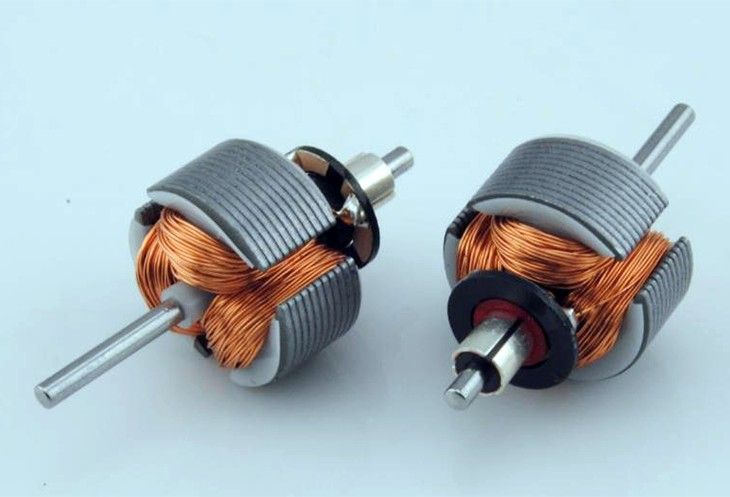Nan amelyore-sekirite ekipman elektrik, tankou motè eksplozyon-prèv, transfòmatè, fil elektwomayetik, ak ballast pou lanp fliyoresan, yon pòsyon gen ladann likidasyon entèn yo. Kondisyon yo pou likidasyon sa yo, tou de mekanikman ak elektrik, yo pi wo pase sa yo pou likidasyon estanda.

Anjeneral, fil izole yo itilize pou likidasyon bobin sa yo ta dwe doub-izole, ak dyamèt nominal bobin la pa dwe mwens pase 0.25mm.
Pou fil emaye yo itilize nan likidasyon bobin sa yo, li rekòmande pou itilize GB/T6109.2-2008 “Polyester enameled wonn fil kwiv, Klas 155,” GB/T 6109.5-2008 “Polyester-imid enameled wonn kwiv fil, Klas 180,” GB/T 6109.6-2008 “Polyimide enameled wonn fil kwiv, Klas 220,” oswa GB/T6109.20-2008 “Polyamid-imid konpoze Polyester oswa Polyester-imid enameled wonn kwiv fil, Klas 220.”
Anplis de sa, Klas 1 emaye fil kwiv wonn jan sa espesifye nan estanda sa yo ka itilize, depi li pase tès ki enpòtan ki endike nan nòm yo.
Apre likidasyon, yo ta dwe itilize yon ajan fekondasyon apwopriye pou amelyore pwopriyete izolasyon likidasyon yo.
Pwosesis fekondasyon an ta dwe swiv metòd espesifye manifakti a, itilize teknik tankou tranpe, koule, oswa fekondasyon presyon vakyòm (VPI) pou ranpli twou vid ki genyen ant fil likidasyon epi asire adezyon fò. Si ajan an fekonde gen solvang, fekondasyon an ak siye yo ta dwe fèt de fwa pou pèmèt evaporasyon sòlvan.
Anjeneral, metòd tankou flite oswa kouch pou izole likidasyon yo konsidere kòm enfidèl pou ekipman elektrik eksplozyon-prèv. Yo ta dwe bay sa a ase atansyon nan pratik jeni.
Anplis, pou likidasyon wo-vòltaj, likidasyon enpreye yo ta dwe trete ak penti anti-kowona pou anpeche plis danje ki te koze pa ekoulman korona..
Nan aparèy elektrik amelyore sekirite, kit se motè, bobin elektwomayetik, oswa bobin lòt ekipman yo, yo ta dwe jeneralman ekipe ak tanperati aparèy pwoteksyon yo anpeche depase tanperati limit nan operasyon nòmal oswa rekonèt kondisyon nòmal.
Si yon likidasyon pa depase tanperati limit la anba surcharge kontinyèl (tankou yon seri rotor motè), oswa si yon likidasyon pa sijè a surcharge (tankou yon ballast pou lanp fliyoresan), Lè sa a, li pa mande pou yon aparèy pwoteksyon tanperati.
Lè amelyore sekirite ekipman elektrik ekipe ak aparèy pwoteksyon tanperati, sa yo ka enstale swa anndan oswa deyò. Kèlkeswa, aparèy pwoteksyon an ta dwe gen apwopriye a kalite eksplozyon-prèv epi yo ta dwe evalye ansanm ak ekipman ki pwoteje yo.
 Shenhai eksplozyon-prèv
Shenhai eksplozyon-prèv
